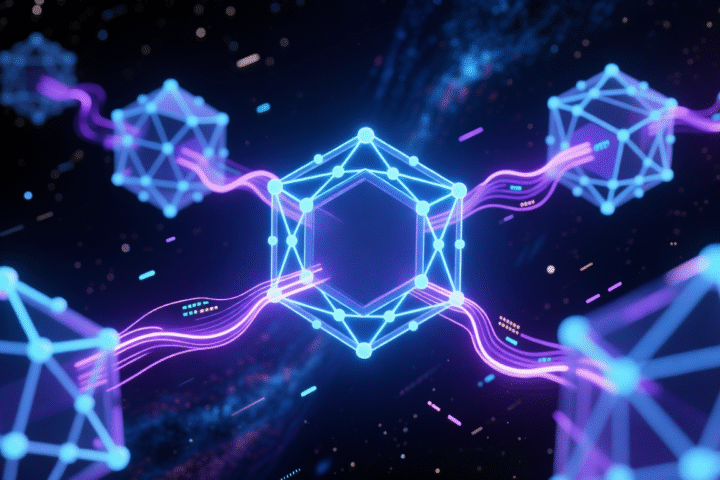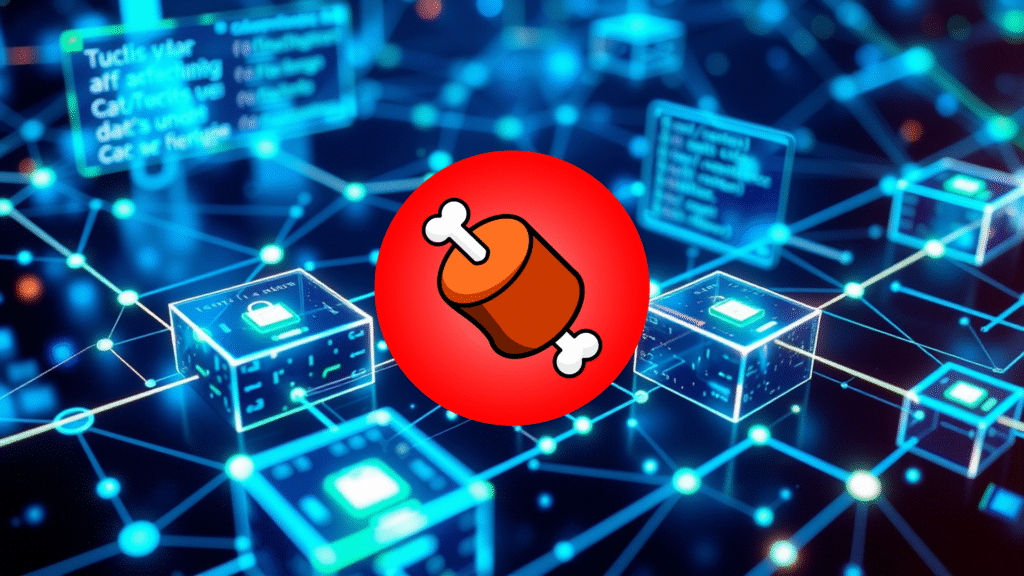Key Takeaways:
- Blockchain is a shared, immutable ledger that records transactions transparently and securely—understanding how it works is key to making smart crypto decisions.
- Decentralization and consensus mechanisms like Proof of Work and Proof of Stake are what make blockchain secure, trustless, and resilient.
- Wallets, smart contracts, and token standards are essential tools in navigating the crypto world—each plays a critical role in how you store, use, and interact with digital assets.
- Blockchain isn’t just for crypto—it’s already transforming industries like supply chain, gaming, identity, and digital art. Understanding the basics helps you see its broader potential.
You wouldn’t buy a car without at least knowing which pedal makes it go—so why throw your money into crypto without understanding how the engine (aka blockchain) works? Before you start chasing coins or minting NFTs, it’s worth getting familiar with a few blockchain basics. Not because you need to become a tech wizard, but because knowing the fundamentals can save you a ton of confusion—and potentially, cash.
Think of blockchain as the behind-the-scenes tech that makes crypto possible. It’s not magic. It’s not just hype. It’s a system—one that’s surprisingly elegant once you break it down. And here’s the thing: the more you understand it, the less likely you are to fall for scams, buy into nonsense, or get stuck asking “Wait… where did my money go?”
So before you invest in that shiny new token with a space-themed logo and vibes only, let’s go through the stuff you actually need to know. Nothing too technical. No confusing jargon. Just straight-up clarity, in plain human speak. Ready? Let’s talk blockchain.
1. What Even Is a Blockchain?
Let’s start with the big one. A blockchain is basically a fancy word for a digital ledger—a giant, shared notebook that keeps track of who did what and when. Imagine every time someone makes a transaction, it gets written down permanently on a page (aka a block), and once the page is full, it’s stapled into the notebook.
Now here’s the cool part: once a page is added, it can’t be changed. That’s what people mean by immutability. No erasing, no edits, no sneaky white-out. And since the notebook is shared across thousands of computers around the world, everyone can see the same copy. That’s transparency. And because no one person or company owns the notebook, it’s decentralized.
Congrats, you just checked off one of your core blockchain basics.
2. Blocks, Hashes, and Chains—Oh My!
Each “block” in a blockchain is a bundle of data—mostly transactions—that gets verified and then sealed shut with a hash. Think of a hash as a unique digital fingerprint that proves the block hasn’t been tampered with.
Here’s the kicker: every block also contains the hash of the block before it. That’s what creates the chain. If someone tries to change even a single letter in one block, the hash changes—and suddenly the whole chain breaks. Tamper detection? Built right in.
It’s like Jenga, but if one block is fake, the whole tower falls. This is why blockchain is so hard to hack—and why it’s such a powerful idea.
3. Decentralization: No Boss, No Backup Plan
In traditional systems (like banks), one central authority controls the ledger. They verify transactions, update balances, and, well, hold the keys to your money.
In a blockchain? There is no central authority. It’s decentralized, which means the network agrees on updates together—no single point of failure, no one person calling the shots. It’s like a group project where no one’s in charge, but somehow everything still gets done.
Decentralization also makes blockchains more resistant to censorship, corruption, and total collapse. It’s messier. But more resilient.
4. Consensus Mechanisms: How Everyone Agrees on the Truth
So if there’s no boss, how does everyone agree on what’s true?
Related: Crypto Fans React as Senator Lummis Says She Won’t Seek Reelection
Enter consensus mechanisms—the systems that help a blockchain’s network of nodes (aka computers) agree on what happened and when.
Two main types:
- Proof of Work (PoW): Nodes compete to solve puzzles. First one to crack it gets to add the next block. Energy-heavy but battle-tested (like Bitcoin).
- Proof of Stake (PoS): Nodes are chosen to validate blocks based on how much crypto they’ve staked (aka locked up). Less energy, faster, gaining popularity (like Ethereum now).
Consensus is the glue holding the whole decentralized notebook together—and one of the most underrated blockchain basics you’ll ever learn.
5. Wallets: Your Digital Key to the Blockchain
If blockchain is the notebook, a wallet is your key to write in it—or at least sign your name next to a page.
There are two main types:
- Hot wallets are connected to the internet (like MetaMask or Trust Wallet). Super convenient, but also more exposed.
- Cold wallets are offline (like Ledger or Trezor). Much safer for long-term storage.
Here’s the golden rule: whoever holds the private key controls the funds. Lose your key? Game over. Share your key? Goodbye crypto. Owning crypto means being your own bank—and that’s both exciting and a bit scary.
6. Smart Contracts: Code That Keeps Its Promises
Smart contracts are like vending machines for rules. You put in input A, and output B automatically happens—no humans required. They’re just bits of code written on the blockchain that execute when conditions are met.
Some examples:
- Buy an NFT? Smart contract transfers it to your wallet.
- Join a DAO? A smart contract records your vote.
- Lend some crypto? A smart contract enforces the terms and sends you interest.
No trust required—just code. That’s the beauty of it.
7. Gas Fees: Why Transactions Cost Money
Doing things on the blockchain isn’t free. Every action—sending tokens, minting NFTs, signing contracts—uses computational energy. That’s where gas fees come in.
Think of gas as a service fee paid to the network to process and confirm your transaction. On Ethereum, fees can spike during peak activity. On other chains like Solana or Avalanche, they’re tiny.
Hot tip: always check gas fees before you click “Confirm.” Sometimes waiting a few minutes can save you a chunk of change.
Related: Global Liquidity Split: Yen Carry Trade Risks Rise as BoJ Eyes New Hike vs BoE Cut
8. Token Standards: Not All Coins Are the Same
In the crypto world, there’s a difference between coins and tokens.
- Coins are native to their own blockchain (e.g., BTC on Bitcoin, ETH on Ethereum).
- Tokens are built on top of blockchains (e.g., USDC, SHIB, or any NFT).
And tokens come in flavors:
- ERC-20: The standard for regular tokens (think currencies, governance tokens).
- ERC-721: The standard for NFTs—unique, non-fungible assets.
- ERC-1155: Combo packs—can handle both fungible and non-fungible items in one contract.
These standards ensure your tokens play nicely with apps and wallets. It’s one of those blockchain basics that’s easy to miss—but super important when things don’t work.
9. Blockchain Isn’t Just About Money
Sure, crypto made blockchain famous—but money is just the beginning. This tech is being used in:
- Supply chains: Tracking food, goods, and medicine from source to store.
- Digital identity: Letting people control their data.
- Gaming: Powering in-game assets you actually own.
- Voting: Testing tamper-proof digital elections.
- Art & music: Helping creators earn directly from fans.
Once you understand the core blockchain basics, you’ll start spotting its fingerprints everywhere—from your grocery store to your favorite online game.
Invest in Knowledge First
So there you have it—nine blockchain basics that can help you feel a little less like you’re stepping into the Wild West of crypto. Remember, blockchain isn’t magic. It’s tech—sometimes complex, sure, but totally understandable once you break it down. The more you know, the better your chances of spotting opportunities—and dodging scams.
Before you jump headfirst into any crypto project or hit that “Buy” button, take a moment. Invest in your knowledge first. Read, watch, ask questions, and don’t be shy about doing a bit of digging. The crypto world moves fast, but a solid foundation in these blockchain basics will keep you steady.
If you want to keep leveling up, check out beginner-friendly glossaries or simple guides on crypto and blockchain. Trust me, it pays off. Because when it comes to your money—and your future—being informed is the smartest investment you can make.
Happy learning, and welcome to the blockchain club!












